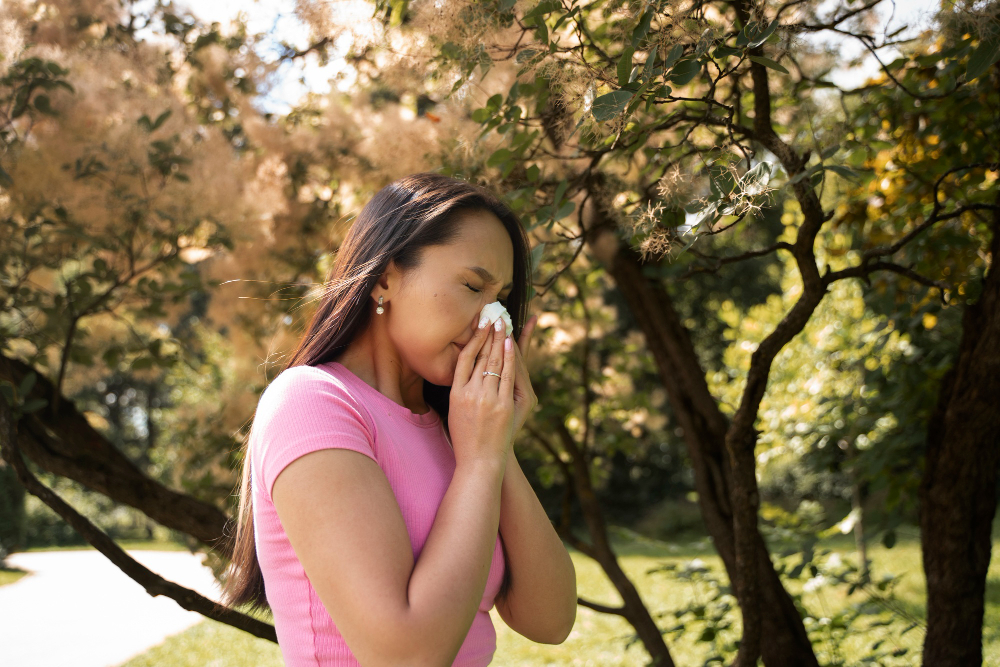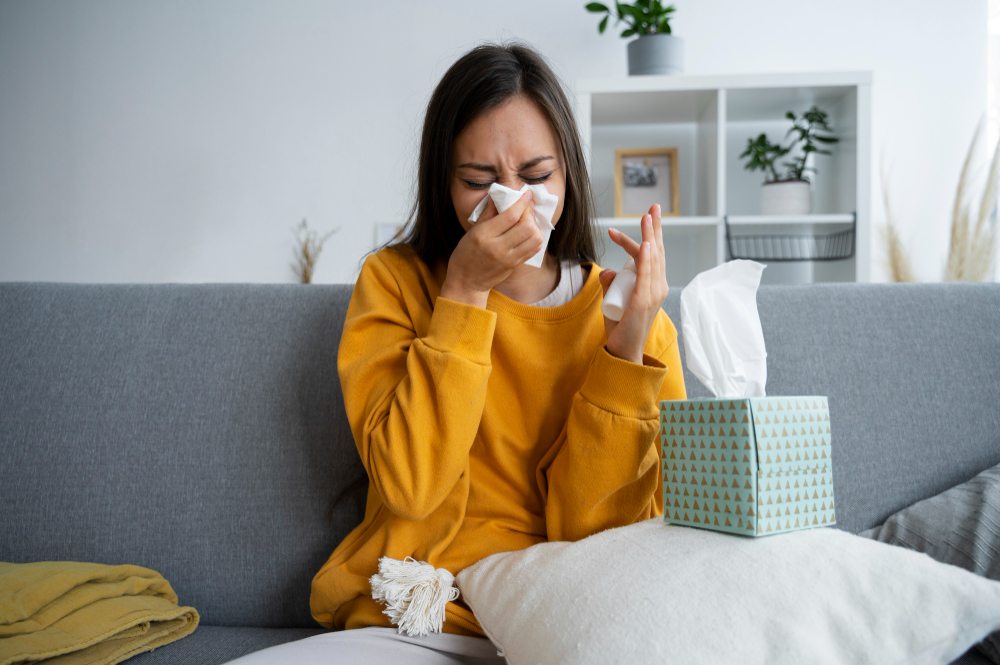ALLERGY OR COLD? HOW TO TELL?
When you catch a common cold, your body’s immune system gears up to battle the virus, leading to various symptoms. However, in the case of hay fever, also known as allergic rhinitis, the symptoms occur because your body reacts excessively to tiny particles called “allergens” present in the air, such as pollen or ragweed. Sometimes, it can be tricky to distinguish between the symptoms of hay fever, which is an allergy, and those of a regular cold. They might overlap, including signs like a runny nose, nasal congestion, sneezing, and coughing.
ALLERGIC RHINITIS
Allergic rhinitis is a prevalent condition characterized by inflammation of the nasal mucous membranes, sinuses, and eyes. It occurs when the immune system reacts excessively to a typically harmless substance, or allergen. This immune response triggers the release of certain chemicals, like histamine and leukotrienes, which lead to the allergy symptoms.
Common symptoms of allergic rhinitis include:
- Itchy sensations in the nose, palate, or throat.
- Runny nose or nasal congestion.
- Frequent sneezing.
- Red, itchy, or watery eyes.
If you’re experiencing these symptoms, it’s essential to consult with a healthcare professional or pharmacist for guidance and appropriate treatment options.
THE COMMON COLD
The “Common cold” is a viral infection that primarily affects the upper respiratory tract, specifically the nose and throat. While there are over 100 viruses that can lead to a cold, it is often caused by the highly contagious rhinovirus, which remains prevalent throughout the year, making it possible to catch a cold at any time.
Symptoms of a cold typically include:
- Runny nose or nasal congestion.
- Occasional muscle discomfort.
- Sneezing.
- Fatigue.
- Throat irritation.
- Dry or productive cough.
If you’re experiencing these symptoms, seeking advice from your healthcare provider or pharmacist is recommended. They can assist you in managing your symptoms and provide suitable treatments.
Common cold or hay fever?
| Hay Fever | Cold | |
|---|---|---|
| Nasal discharge (mucus secretion) | Very liquid (transparent), may sometimes thicken | Thick (white, yellowish, or greenish) |
| Nasal congestion | Both nostrils | One or both nostrils |
| Sneezing | Often (serial) | Occasionally |
| Itchiness | In the nose or throat | No itchiness |
| Red, watery, or itchy eyes | Often | No eye symptoms |
| Cough | Sometimes, especially if the person is asthmatic | Often |
DIFFERENT TYPES OF ALLERGIES
Seasonal allergies: When the allergen responsible for allergic rhinitis is only found during a particular time of the year, the symptoms will consistently manifest during that specific season. For instance, individuals allergic to tree pollen may experience symptoms in the spring, while those with a ragweed allergy might encounter symptoms in the fall.
Perennial allergies: In cases where the allergen is present in the environment year-round, symptoms can persist throughout every season. Allergens like dust mites, dust, and molds can trigger allergic rhinitis symptoms continuously throughout the year.
SKIN TESTING FOR ALLERGIES, TO HELP YOU IDENTIFY TRIGGERS
WHEN IN DOUBT, ASK YOUR PHARMACIST
Want To Know More

ALLERGIES: CAUSES, SYMPTOMS, AND TREATMENTS
Learn about their causes, common symptoms, and effective treatments to find relief. Delve deeper into understanding allergies and how to manage them.
Read More

Treating Seasonal Allergies
Discover effective strategies to alleviate symptoms and enjoy a more comfortable allergy season. Explore in-depth guidance on managing seasonal allergies for a healthier, happier life.
Read More

Indoor Allergens
Explore ways to address and reduce indoor allergens for a healthier living environment. Dive into comprehensive information on managing indoor allergies and enhancing your indoor air quality.
Read More

Seasonal Allergy Peak Times
Understand when and why seasonal allergies tend to worsen, and learn how to prepare and manage symptoms during these challenging periods.